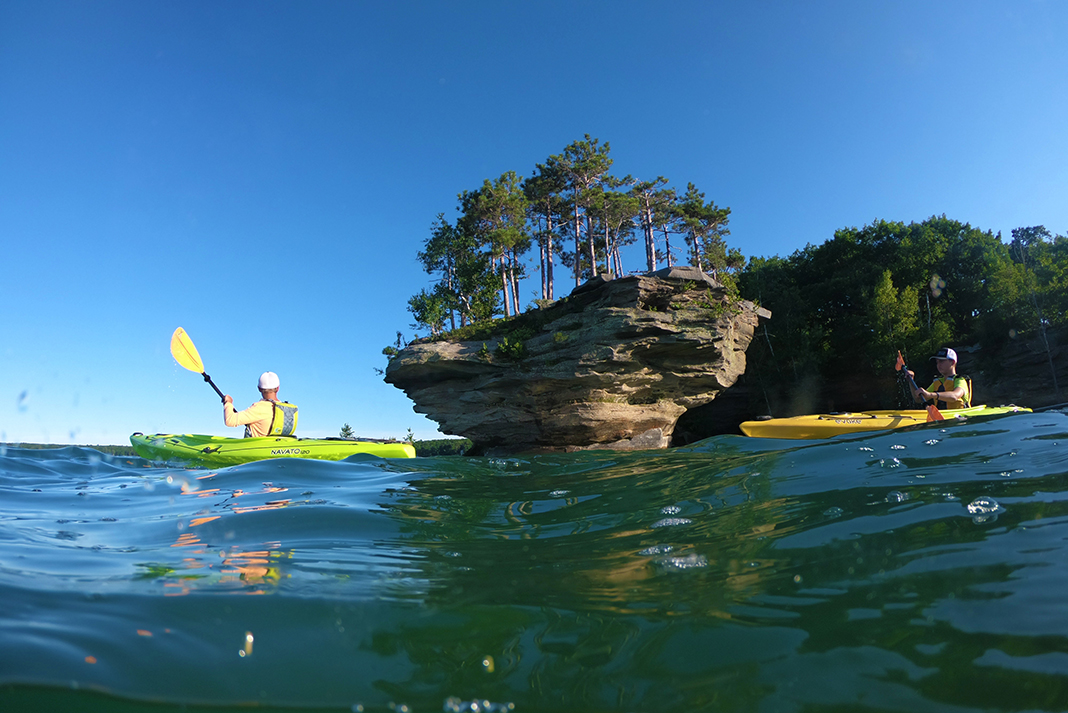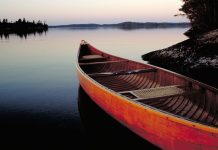Saving for retirement? Here’s the best piece of financial advice: buy a kayak! “What?” you say. “A new composite kayak and gear costs about $4,000, and I lose $500 as soon as I take it from the dealer’s showroom!”
Why buying a kayak is the smartest investment you’ll ever make
A kayak is not a short-term investment. Nor is it a high-priced piece of frivolous technology that’s obsolete within a year or two. It’s an asset that will give you a positive return on investment to rival any high-yield bond or blue-chip stock market play. If you do the math you’ll see that a kayak pays for itself and then some. Plus, a kayak yields immeasurable rewards that no financial advisor can even dream of offering.
First, let’s stick with the numbers
In our society, leisure activities invariably cost money. To watch movies, see a sports game, catch a play or buy a magazine, we have to spend money. Have you ever calculated what these pleasures cost you an hour?
For the purpose of comparisons, let’s assume an average entertainment cost at about $12 per hour. That’s on par with movie going. And it’s a low figure given that hourly kayak rentals are in the range of $15 per hour.
At $12 per hour, it takes 333 hours of paddling to recover a $4,000 kayak investment. If you paddle 333 hours in the first year, you’ll recover the cost of your kayak. That’s what financial analysts call a 100-percent return on investment.
Paddling the equivalent of 41 eight-hour days in one year is unrealistic for most people
But imagine you use your kayak one weekend a month for six months of the year—the warm months—and for just six hours a day. That amounts to 12 hours a month, 72 hours a year. With leisure costs averaging $12 per hour, you’re getting $864 in value out of your $4,000 kayak investment each year. That’s a yield of 20 percent— an impressive rate of return! Keep this up for five years— 360 hours of paddling—and your kayak will more than pay for itself.
Just ask your financial advisor if there’s a bond or stock that’s as likely to yield 20 percent. If you’re lucky you might find one, but these investments tend to be risky. Stocks often drop in value, but I’ve sold 10-year-old kayaks for more than the original purchaser paid.
If you do a little market research you’ll see that kayaks are manufactured with products from the petrochemical industry and energy prices have risen dramatically in the last 10 years.
In the next decade or so, with the world’s known oil reserves diminishing, the upward pressure on energy prices is guaranteed to increase. Therefore the price of kayaks will increase. Over the medium- to long-term, kayaks are as good as gold. It may even be worth buying a warehouse full of them.
The financial data is solid, but the major benefits of owning a kayak are the intangibles that your accountant will never itemize. All your other investments take the form of investment account numbers or slips of paper in a safe deposit box—hardly any fun at all. And with all the stress of watching your fortunes rise and fall in the markets, you may not even live long enough to cash in. You’re much better off riding the ups and downs of waves and tides.
Every hour of paddling provides physical activity and extends your life
You don’t have to take my word for it. Reports from the U.S. Surgeon General and Health Canada indicate that being active reduces the risk of heart disease, obesity, high blood pressure, adult onset diabetes, stroke and colon cancer.
Physical activity like kayaking also reduces symptoms of anxiety and depression, which is more than you can say about day trading. In other words, kayaking will recharge both your physical and mental batteries. Now that’s a solid return on investment.
Owning and using a kayak is a healthy lifestyle choice and a solid addition to any portfolio
Kayakers don’t have to pay money to sit in a darkened movie theater and be spoon-fed second-rate commercial creativity. They invest the price of admission in themselves and get into the environment and enjoy it.
And if you’re still not satisfied with all the health benefits and the straight 20-percent return, you might calculate how much the sight of bald eagles and harbor seals is worth. In my mind, that’s priceless.
At the time of publication, Chris Banner was doing sales for Seaward Kayaks and managing The Island Outdoor Center. Today, he’s a freelance writer, novelist and the publisher, designer and editor at Diamond River Books in Shawnigan Lake, British Columbia.
This piece originally appeared in the Summer/Fall 2004 issue of Adventure Kayak. Recirc is a new column reintroducing some of our favorite stuff from the first 20 years of Rapid, Adventure Kayak and Canoeroots.









Agree that purchasing a kayak is a good investment. But my wife and I have six kayaks, what’s wrong with us?
If you build your own, say it takes 300 hours to do a top quality job.
That is three hundred hours you did not spend in the pub.
I’m Irish… An Irish person would conservatively average 3 pints per hour, so that is a total of 900 pints per kayak.
A pint is around €4.00 … 4×900 = €3600.00
The material costs and overheads to build the kayak is a maximum of €1000.00
Even if you don’t sell the boat, building the kayak has saved you €2600.00
Then you have the value of the finished kayak. I sold my last kayak for €9000.00
The total profit from that kayak, including not-being-in-the-pub time was €11600.00
There is no arguing with mathematics.
Well dang, you just convinced me to want to buy a kayak! Great read